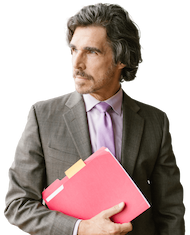These complementing opposites help bring innovation into focus
Posted on September 10, 2018
Here’s some food for thought! Innovation is the new strategic driver to grow your business, yet for a lot of people the concepts associated with it can appear contradictory. Some familiar terms have taken on new meanings as they are applied to today’s transformative world. Knowing these terms, and how they relate to and complement each other, will be the first step in transforming your organization to a forward-thinking one, ready to embrace innovation.
Creativity vs Innovation
Creativity and Innovation are closely related, but it would be dangerous to think they are one and the same.
- Creativity involves finding original ideas through the use of imagination, and considering all possibilities without inhibition or judgement. Although creative exercises are often done in groups, it is essentially an individual process.
- Innovation links possibilities directly to organizational strategy — it is applied creativity delivering measurable results. Innovative thinking requires the input and perspectives of different people as creative ideas are tested, refined, and improved.
Complicated vs Complex
These words can be mistaken for synonyms. Don’t make that error. Understanding the difference is crucial to the success of organizations today.
- Gaining a skill can be a complicated process, like learning to drive. Once you know the rules and gain the coordination and experience needed, it’s easier. It’s still complicated, but has become predictable; we rely on past experience and can expect success.
- A complex problem, on the other hand, is rife with ambiguity and uncertainty. Ever gone to a party where you didn’t know anybody? It’s tough, because human interaction is so unpredictable. Likewise, in the shifting landscape of complex organizational structures, we don’t always know what will come next. New patterns emerge, requiring different responses. A successful organization must be able to discard what worked in the past to meet new realities head on.
Divergent vs Convergent
Divergent and convergent thinking are different approaches to problem solving. People are usually better skilled at one or the other. Because both are needed, an organization benefits from identifying each “type” among its employees.
- Divergent thinking works on the premise that there is an infinite number of solutions to a problem. It is a free-flowing and intuitive process, involving brainstorming, spontaneity and juxtaposition of seemingly unrelated things. Divergent thinkers won’t hesitate to go into “dangerous thinking” territory.
- Convergent thinking, on the other hand, involves zooming in to find the single optimum solution to a defined problem. It relies on logic, historical data, impartial evaluation, discussion, voting, and synthesis of ideas from different fields of study. The benefits of convergent thinking is that it is time-efficient and assists in quick decision-making.
—–
This material has been drawn in part from Schulich ExecEd’s upcoming program Certificate in Strategic Leadership & Innovation (October 15 – 19, 2018) which allows you to develop your capability to successfully lead innovation projects – from strategic growth planning to new products and operational improvements. It is one of three stand-alone modules which form the Masters Certificate in Innovation Leadership.













